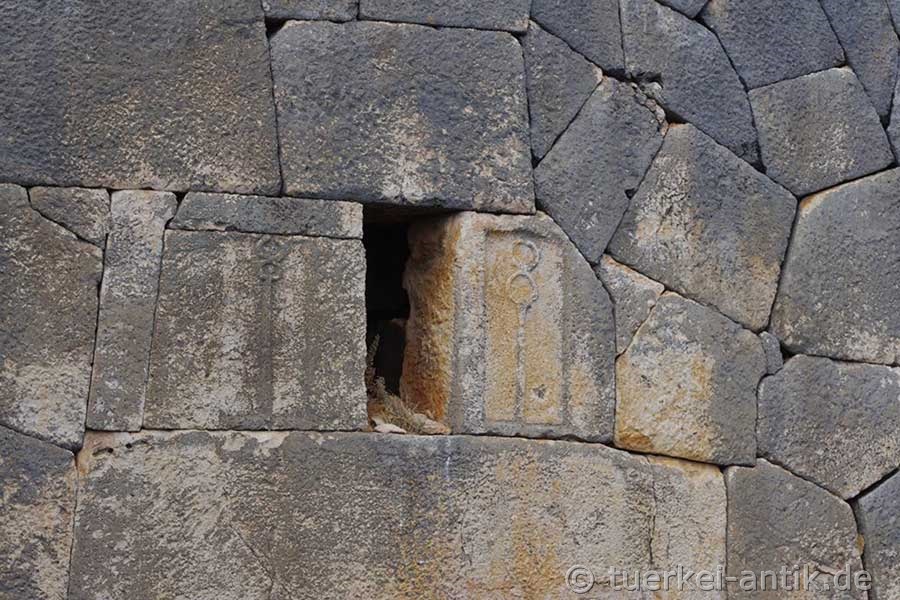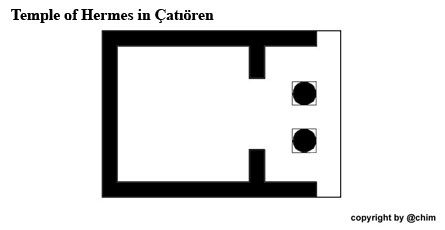 |
|
Ancient temples in Turkey Çatıören |
||||||||||||||||||||
|
|
|
|||||||||||||||||||
|
||||||||||||||||||||
| Hermes | ||||||||||||||||||||
|
In Greek mythology Hermes is the patron god of traffic, travellers, merchants and shepherds, but also the god of thieves, art dealers, the art of speaking, gymnastics and thus also palestra and magic. |
||||||||||||||||||||
|
|
||||||||||||||||||||
| The history of Çatiören: |
 |
|||||||||||||||||||
|
|
||||||||||||||||||||
|
The ruins of Çatıören are grouped around a northwest-southeast oriented limestone spur at the edge of a side valley of the Yenibahçe Deresi. |
||||||||||||||||||||
|
|
||||||||||||||||||||
|
The Temple of Hermes is a simple Antae temple with an area of about 130 square meters. All walls are made of double-shell polygonal masonry. His cella has the shape of a slightly warped rectangle, the antes protruding about four metres stand at another slightly oblique angle to it. In the south-east opened Pronaos stood originally two columns without fluting, of which individual drums lie in the closer environment. |
||||||||||||||||||||
|
|
||||||||||||||||||||
|
Two windows are recessed into the southwest wall, the other two walls have a high rectangular niche. There is no clarity about the roof construction. The wall to the Pronaos seems to have been preserved in its full height, while the two side walls rise slightly, which suggests a triangular gable and a ridge running over it. The terrain around the temple is difficult to walk on. |
||||||||||||||||||||
 |
||||||||||||||||||||
|
The door with a monolithic lintel is slightly offset to the right from the middle, on each side and above there is a narrow, high niche. The middle one is flanked by two reliefs showing the Olbic sign of a Hermes staff. To the right of the entrance, slightly recessed, there is an inscription prohibiting Cilician measurements. The Polis mentioned in it probably refers to Elaiussa Sebaste. An inscription of a foundation lies in the Pronaos, it describes a Pomponius Niger as Hermes priest, which leads to the identification of the temple. According to the inscriptions, the temple is dated around the 2nd to 1st century BC. Similarly simple temple buildings are not known from southern Anatolia. Traces of a Byzantine redesignation were not found, possibly because the building was not architecturally suitable for it. |
||||||||||||||||||||
| Photos: @chim, Monika P., Андрей Мурашкин | ||||||||||||||||||||
| Translation aid: www.DeepL.com/Translator | ||||||||||||||||||||
| Source: Wikipedia and others | ||||||||||||||||||||
|
|


